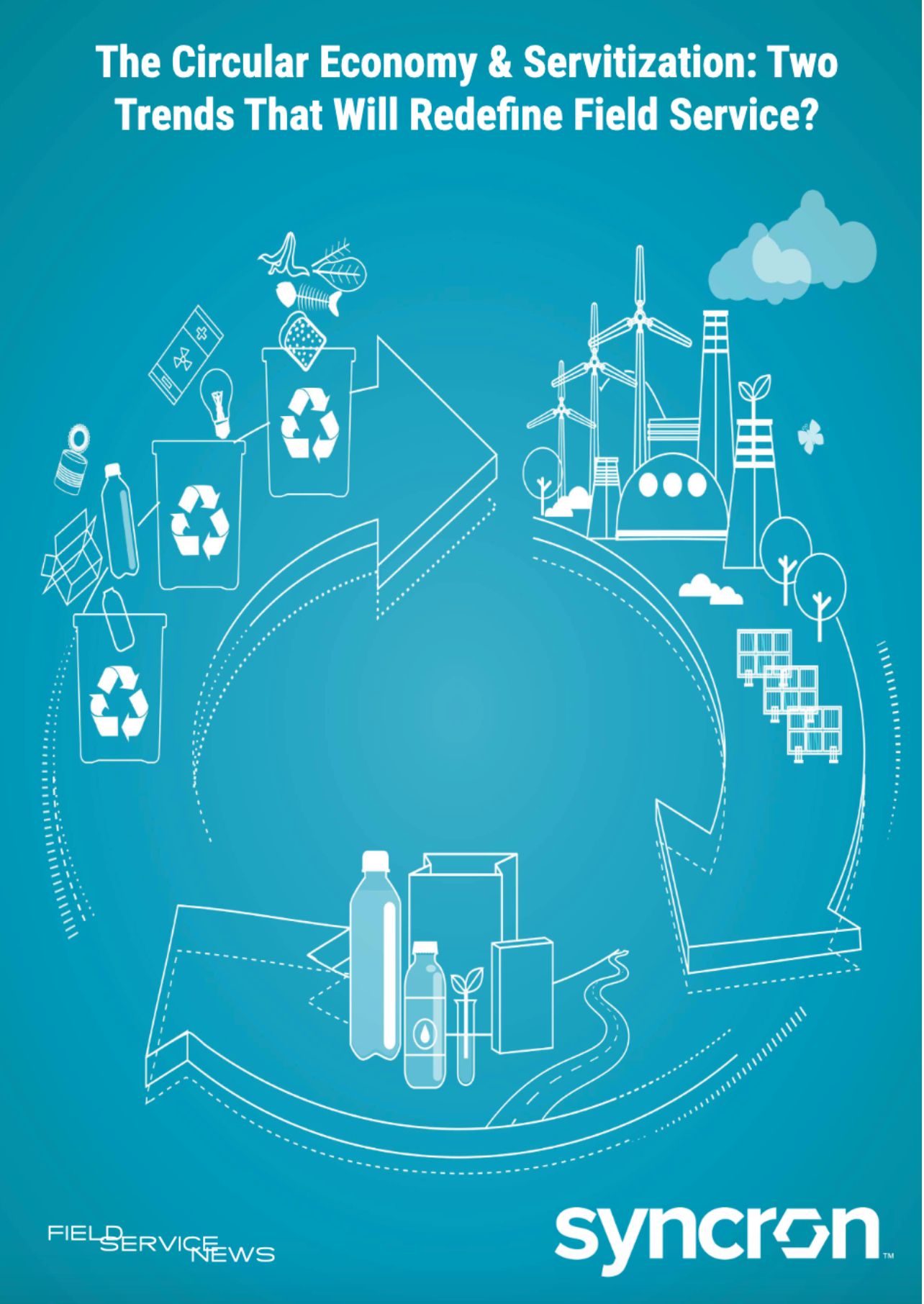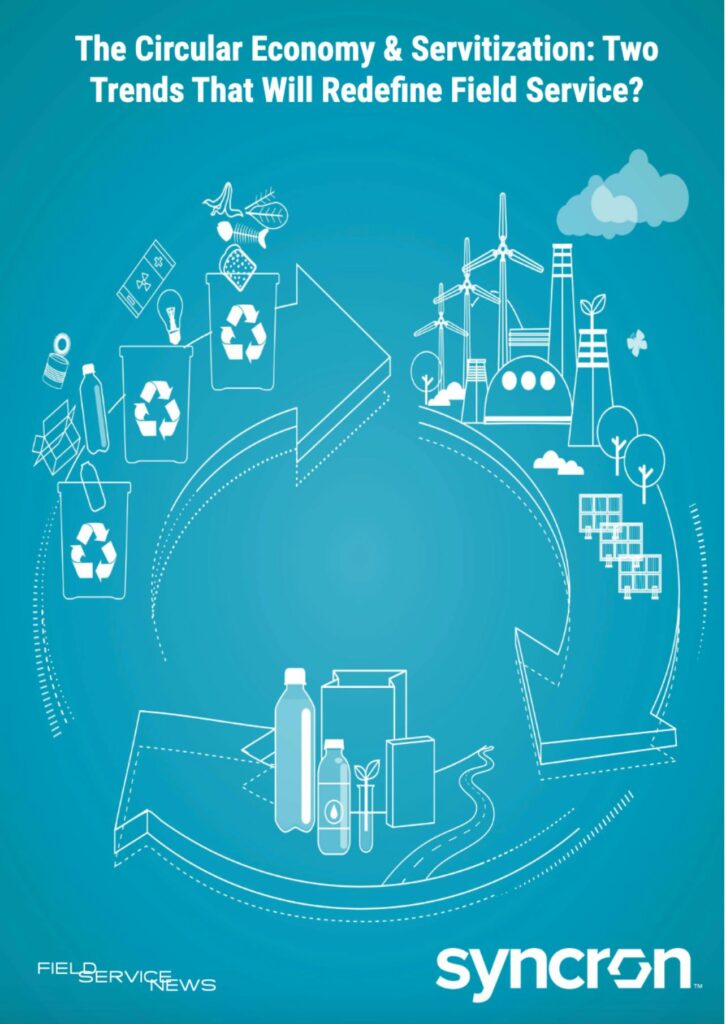How Can Your Field Service Organisation Embrace Circular Economy and Servitization?
How Can Your Field Service Organisation Embrace Circular Economy and Servitization?
The transition to a circular economy and servitization offers substantial opportunities for field service organizations to create more sustainable, profitable business models.
By proactively managing maintenance and optimization, transitioning from product sales to service offerings, leveraging data and analytics effectively, and exploring new revenue models and digital technologies, companies can reduce waste, create closed-loop systems, and increase profitability while diminishing their environmental footprint.
However, this transition also presents challenges. These include the shift from reactive to proactive maintenance, moving to service-based models, and managing potential losses of traditional revenue streams, such as spare parts revenue. Overcoming these challenges requires an investment in new skills, capabilities, and technologies, such as predictive maintenance algorithms, machine learning, and AI.
Indeed, forward-looking solutions providers like our partners on this paper, Syncron, are closely supporting their clients as they navigate digital transformation.
Syncron provides a sophisticated toolset to align planning, pricing, and service, positioning them perfectly to assist service organizations in implementing many of the concepts discussed in this paper.
The benefits of adopting the principles of the circular economy and servitization far outweigh the challenges. These practices allow field service organizations to build more sustainable, profitable, and resilient business models, benefiting both their bottom line and the planet.
Field service management professionals need to lead this shift toward a more sustainable, profitable future for their organizations and the world. The following reflective questions provide a starting point for these professionals as they contemplate how to steer their organizations closer to embracing the circular economy and servitization:
- How can we transition from a product-based business model to a service-based business model? What skills and capabilities do we need to develop to make this transition successfully?
- How can we leverage data and analytics to optimize our products for longevity and sustainability? What technologies and partnerships do we need to invest in to make this happen?
- How can we overcome the challenge of spare parts revenue in a circular economy and servitized business model? What new revenue models and pricing strategies can we explore to align with the principles of the circular economy and servitization?
- How can we establish a closed-loop system for our products, in which we take back used products and recycle them into new ones? What partnerships and technologies do we need to invest in to make this happen?
- How can we leverage technology to facilitate more efficient service delivery and reduce waste? What technologies, such as predictive maintenance algorithms and machine learning capabilities, do we need to invest in to optimize our service delivery and product lifespan?


Data usage note: By accessing this content you consent to the contact details submitted when you registered as a subscriber to fieldservicenews.com to be shared with the listed sponsor of this premium content Syncron who may contact you for legitimate business reasons to discuss the content of this briefing report.
This content is available for FSN PRO members and also for a limited period for FSN FREE members. Please make sure you are logged in to access this content.
Not yet subscribed? Instantly unlock this content and more on our forever-free subscription tier FSN FREE
Join FSN FREE today!
Subscribe to our forever-free subscription tier FSN FREE by completing the brief form below and get instant access to this resource plus a selection of premium resources every month.
[pmpro_signup submit_button="Get access now!" level="1" redirect="referrer" custom_fields="true" short="true"]
Some browsers may not support our quick-register pop up function. If you cannot see a red button above this message then click here to head to the FSN FREE registration page instead.

Do you want to know more?
If you are already a subscriber you can access the report instantly on the ‘read now’ button below. If the button is not showing and you are already a subscriber then please log-in and refresh this page.
Not yet subscribed? Instantly unlock this content and more on our forever-free subscription tier FSN FREE
Join FSN FREE today!
Subscribe to our forever-free subscription tier FSN FREE by completing the brief form below and get instant access to this resource plus a selection of premium resources every month.
[pmpro_signup submit_button="Get access now!" level="1" redirect="referrer" custom_fields="true" short="true"]
Some browsers may not support our quick-register pop up function. If you cannot see a red button above this message then click here to head to the FSN FREE registration page instead.

 Data usage note: By accessing this content you consent to the contact details submitted when you registered as a subscriber to fieldservicenews.com to be shared with the listed sponsor of this premium content Syncron who may contact you for legitimate business reasons to discuss the content of this briefing report.
Data usage note: By accessing this content you consent to the contact details submitted when you registered as a subscriber to fieldservicenews.com to be shared with the listed sponsor of this premium content Syncron who may contact you for legitimate business reasons to discuss the content of this briefing report.


